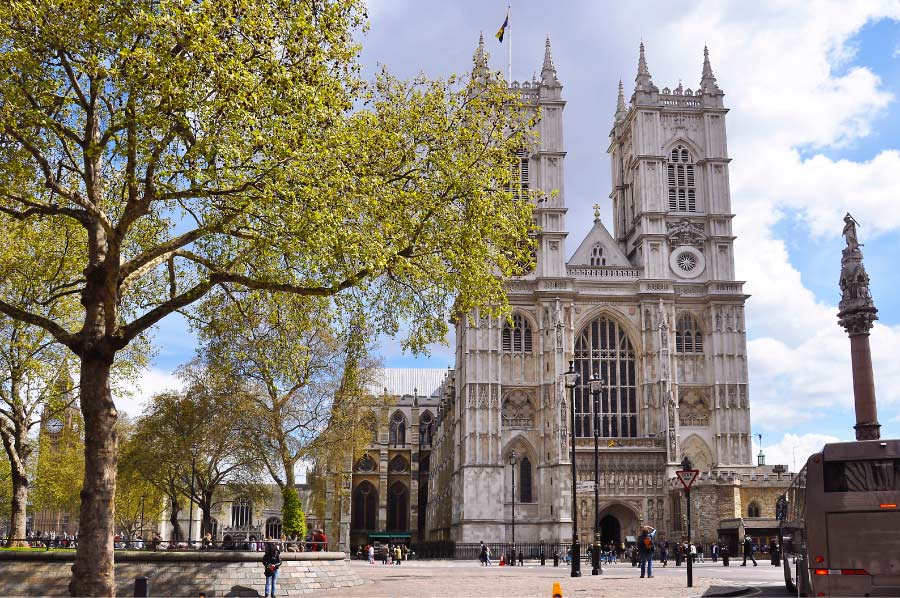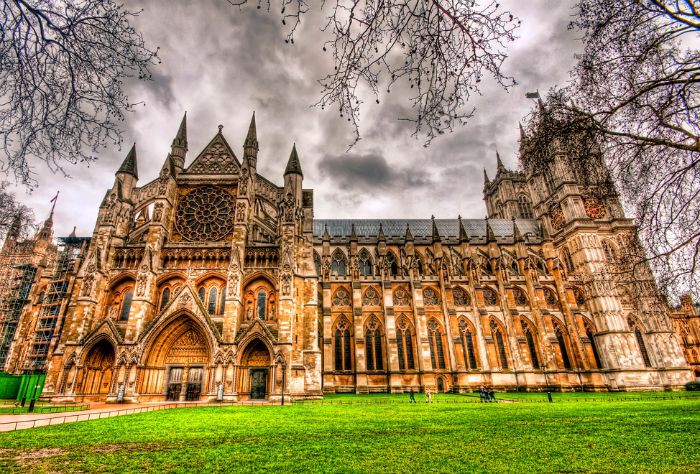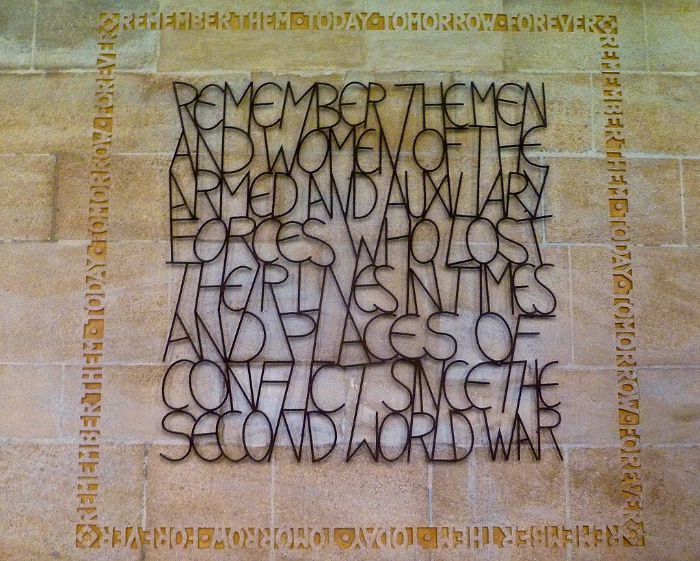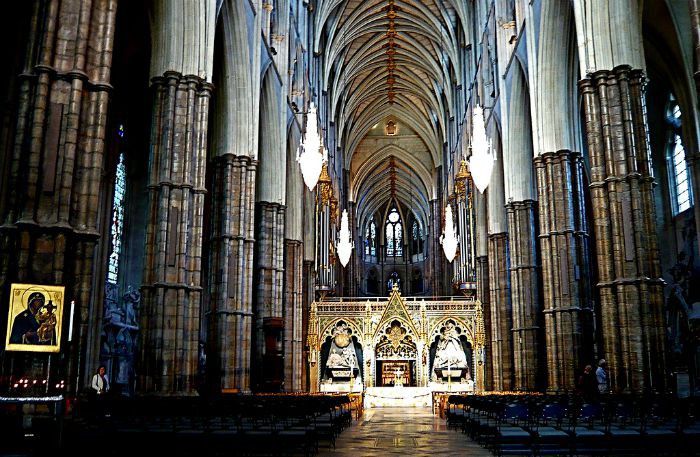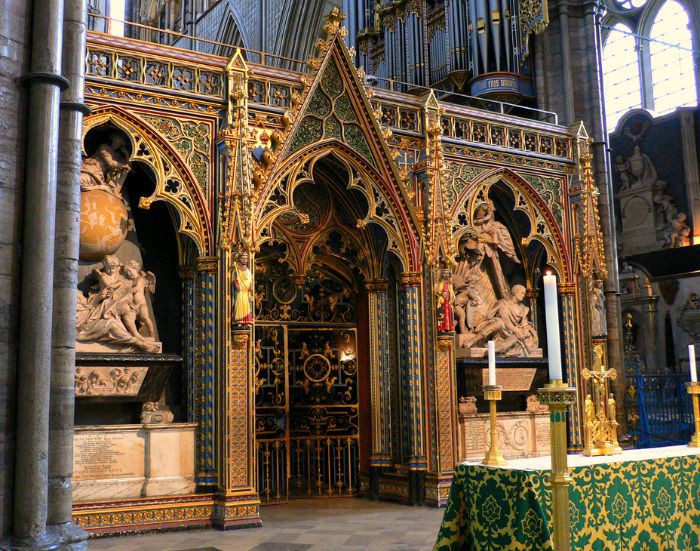One of the most iconic buildings in the city, Westminster Abbey is a place you must visit at least once in your life. For this wildly popular London attraction, it’s best to book tickets in advance. That way you avoid queues and the possibility of not getting in at all!
Before we get into what you can see inside Westminster Abbey, let’s dive into the history of the building and how it came to be such an important religious and cultural icon.
When was Westminster Abbey built?
According to historians, a young fisherman called Aldrich had a vision of Saint Peter on the banks of the River Thames and when he shared this with others it was positively received. So much so that Saint Dunstan and King Edgar installed a Benedictine monks community on the site of where Westminster Abbey now stands.
Who built Westminster Abbey?
In 1065, Edward the Confessor wanted to build a place for his tomb. So, he decided to combine the Benedictine monastery and create a larger church dedicated to St Peter the Apostle – the first to be built in Romanesque style. The building survived nearly two centuries until King Henry III rebuilt it with new Gothic architecture between 1220 and 1272.
Since 1066, the Abbey has been the setting for every Coronation, has hosted 16 royal weddings, and is the final resting place for numerous monarchs.
Did you know? The official name for Westminster Abbey is the Collegiate Church of St Peter at Westminster and is a ‘royal peculiar’ because it is under the jurisdiction of the British monarch rather than the Church of England.
Who is buried in Westminster Abbey?
Notable royals buried in Westminster Abbey include Anne of Cleves, Edward the Confessor, Edward V, Mary Queen of Scots, and Elizabeth I, while some other famous people include Charles Darwin, Sir Isaac Newton, and Stephen Hawking. There is also a long list of memorials for important literary figures in the Poet’s Corner.
Getting There
The quicker you make it to Westminster Abbey, the more time you’ll have to explore.
St James’s Park and Westminster tube stations are the closest. At Westminster, take Exit 4 for the quickest route.
You can also visit Westminster Abbey on the Golden Tours Hop-On Hop-Off Bus Tour. Simply hop off at the stop and explore the area.
What you can see inside Westminster Abbey
The Abbey is marvellous to admire from the outset with its intricate details and soaring towers. But, once inside you are treated to an immense array of historical and religious artefacts, tombs, and symbols. Your audio guide will inform you about each important part of the Abbey, but we have compiled some of the must-see sections.
The Coronation Chair
King Edward I commissioned this chair in 1296. Since 1308, it’s been the official coronation chair of every British monarch (except Queen Mary II who was crowned on a replica). It’s the oldest piece of furniture that is still used for its original purpose.
Chapter House
Set in the East Cloister, the octagonal room dates back to the 1250s. The monks used to gather there to pray and plan their day of work. The room is decorated lavishly with sculptures, stained glass and wall paintings. It also contains the oldest door in Britain, which dates to the 1050s.
Poet’s Corner
One for literature lovers, Poet’s Corner is in the South Transept of Westminster Abbey. It has many graves and dedications to the greats of English literature. Geoffrey Chaucer, Charles Dickens, Rudyard Kipling and Thomas Hardy are all buried here. There are also dedications to writers such as Shakespeare, Oscar Wilde, the Bronte sisters, TS Eliot and Jane Austen.
Originally established in 1400, as the burial place for Geoffrey Chaucer, there are now more than 100 writers and poets commemorated there. When someone is to be buried or memorialised in the Poet’s Corner, the Deans of Westminster make the final decision. They consult others before providing a space based on merit.
Grave of the Unknown Warrior
This is the grave of an unidentified British soldier from the First World War. An unknown French soldier was buried on the same day (11 November 1920) in the Arc de Triomphe. The burials honour the unknown dead and have inspired similar around the world.
Parliament Square
If you have time before or after your visit, wander around Parliament Square, the patch of grass in front of the Abbey. The statues of great noble figures such as Winston Churchill, Robert Peel, Abraham Lincoln, Nelson Mandela and Mahatma Gandhi all line the square.
Westminster Abbey Shop
If you are looking for a gift or souvenir to remember your visit to the church, then drop by the Westminster Abbey Shop as you exit. Open 10am to 4:55pm daily, you can browse jewellery, decorations, cutlery and plates, mugs, puzzles, tote bags, toys, and so much more!
Westminster Abbey Opening Times
Westminster Abbey is open to the general public from 9:30am to 3:30pm Monday to Saturday. It is not open on Sundays.
Areas open include the Cloisters, College Garden, Chapter House and the Pyx Chamber. The Abbey closes for visiting one hour after the last entry.
Extra Things to Remember:
- The Abbey is large and can be chilly in winter (and even in autumn and spring!), so wrap up warm.
- No photo or video is permitted inside, but there are plenty of awesome photo opportunities outside and in Parliament Square.
Ready to plan your visit to Westminster Abbey?
Images from Leonard Bentley, hjjanisch and Herry Lawford via Flickr.
Latest Posts:
- Golden Tours’ 12 Days of Giveaways 2025
- A Guide to Christmas Lights & Markets in London
- Great Christmas Activities & Events for Kids in London
- It’s a Magical Hogwarts Christmas
- What’s Open in London on Christmas Day 2025?
Follow us on Instagram @goldentoursuk!
